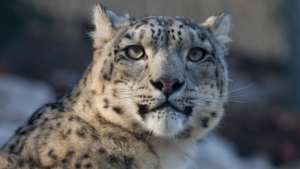
Snow Leopard
A big cat adapted to cold mountainous regions
Conservation Status | Endangered
The Snow Leopard is a large, elusive big cat native to the mountain ranges of Central and South Asia, including the Himalayas and the Karakoram range in Pakistan. Known for its beautiful fur and remarkable adaptability to harsh, cold environments, the Snow Leopard is an important species for the health of its ecosystem.
Habitat & Lifestyle
Snow Leopards inhabit steep, rugged mountains, typically between 3,000 and 4,500 meters in elevation, where they prefer rocky outcrops and cliffs for hunting and shelter. They are primarily solitary animals, except during mating season and when a mother is raising her cubs. Snow Leopards are crepuscular, being most active during dawn and dusk. Their diet consists mainly of prey such as mountain goats, sheep, and smaller mammals.
Area Found
In Pakistan, Snow Leopards are primarily found in the northern mountainous regions, including areas like Gilgit-Baltistan, the Khunjerab National Park, and the Kaghan Valley. These regions provide the rocky terrain and high-altitude environment that Snow Leopards require for survival.
Quick Facts
- Length: 75-130 cm (excluding the tail).
- Weight: 22-55 kg.
- Characterized by thick, smoky-gray fur with dark rosettes and spots, long tail, and short legs, which help them navigate snowy terrain.
- Primary threats include habitat loss, poaching for their beautiful pelts, and conflict with livestock herders.
- Snow Leopards have wide, fur-covered paws that act like natural snowshoes, enabling them to walk on snow with ease.




Did you spot a mistake or have more to add? Let us know!
Your feedback helps Haewan keep information accurate and up-to-date.
